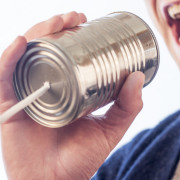Successful peuasion requires intellectual heavy lifting. Understanding your target, knowing how to increase the value of your offering, choosing the right words and determining the timing of your persuasive efforts all are prerequisites of effective persuasion.
No approach or technique can guarantee persuasion success, but there are ways to determine if you are, indeed, made to persuade.
In professional settings, persuasive people are:
- Assertive: Inclined to be bold and self-assured.
- Empathetic: Possessing the ability to see the world from another person’s perspective.
- Communicative: Adept at applying verbal and nonverbal communication.
- Tenacious: Extremely persistent in adhering to or accomplishing something.
- Resilient: Possessing the ability to recover quickly after hearing “no.”
A Self-Test
Rank yourself in each area based on the descriptions below:
1. Assertive
Low: You rarely ever raise a new or contentious issue with others.
Medium: You regularly speak out in meetings and present cases for your statements.
High: Others might describe you as hard-headed or strongly opinionated.
Low Medium High
1 2 3 4 5 6 7 8 9 102.
2. Empathetic
Low: You rarely consider another person’s perspective.
Medium: You easily determine when others want or don’t want to continue a conversation.
High: You’ve cried tears of joy at another’s success.
Low Medium High
1 2 3 4 5 6 7 8 9 10
3. Communicative
Low: You tell everyone the same thing, the same way; you also send a lot of group emails.
Medium: You can explain most things to most people.
High: You intentionally vary both verbal and nonverbal approaches to suit your audience.
Low Medium High
1 2 3 4 5 6 7 8 9 10
4. Tenacious
Low: You try to convince people of an idea, but you’re not going force them to agree with you.
Medium: When you want something, you’ll keep trying to get it for a good long time.
High: You hold on to your positions and objectives forever.
Low Medium High
1 2 3 4 5 6 7 8 9 10
5. Resilient
Low: When people say “no” to you, you feel personally rejected and depressed for days or weeks.
Medium: When rejected, you feel down, reflect on what happened and then move on.
High: Nobody likes to hear “no,” but you quickly shrug it off and move forward.
Low Medium High
1 2 3 4 5 6 7 8 9 10
Interpreting Your Results
Doing well on this self-test isn’t about scoring 10 in each area; it’s about possessing the right blend of these important behaviors of persuasive people.
A strength overdone is a weakness.
Let’s say you have great voice inflection and people find you an engaging and persuasive public speaker. Go too far with that voice inflection, though, and you’ll sound like a crazy — and not-at-all-convincing — late-night infomercial host.
Here’s my take on the optimum score for each essential behavior of persuasive people:
Assertiveness: You should score around a seven here. You certainly can’t be devoid of assertiveness and still be considered persuasive; at the same time, if you gave yourself a 10, you might have already crossed the line from assertiveness to aggressiveness.
Empathetic: An eight is great. You can’t be tone-deaf to the other person’s needs, but you also shouldn’t make your objectives completely subservient to your target’s every whim. You want to put yourself in the other person’s shoes temporarily; you don’t want to live there.
Communicative: This is where you want to hit the persuasive ball out of the park. Communication skills are crucial. What you say, how you say it, where you say it, when you say it and what you’re wearing all count. You want to be at your best, using both verbal and nonverbal communication to suit the message needs of your audience in much the same way a chameleon changes colors depending on mood and circumstances.
Tenacity: This one might surprise you. To be a persuasive professional, you only should score about a five or six on the tenacity scale. If you hold on to your ideas too tightly, you may quickly establish the reputation of someone who is unreasonable or obstinate. The key to knowing when you’ve gone too far is the ability to decode corporate-speak. When people start telling you they “like your passion,” that’s code for “We think you’ve lost your mind.” When you hear that, ease off the throttle.
Resilient: You need to score around a nine here, because you will face a lot of rejection in your career. No one hears “yes” all the time, so you better learn how to handle “no” appropriately. If someone doesn’t like your suggestion for the new marketing campaign, and you sulk about it for weeks as some sort of personal condemnation, you’re setting yourself up for a brutal existence. I’m not suggesting you be completely unfazed by rejection, either; that sort of momentary unhappiness can stimulate you to reflect and make important and necessary adjustments to your approaches. But the key here is taking action after hearing “no.” Do you get back to work quickly? People who score a nine in resiliency do.
It’s important to understand that your ability to improve is not based on some sort of inherent genetic disposition. You don’t need to be born with a silver tongue in order to be successful at persuasion.
(Photo by Ryan McGuire via Gratisography)







